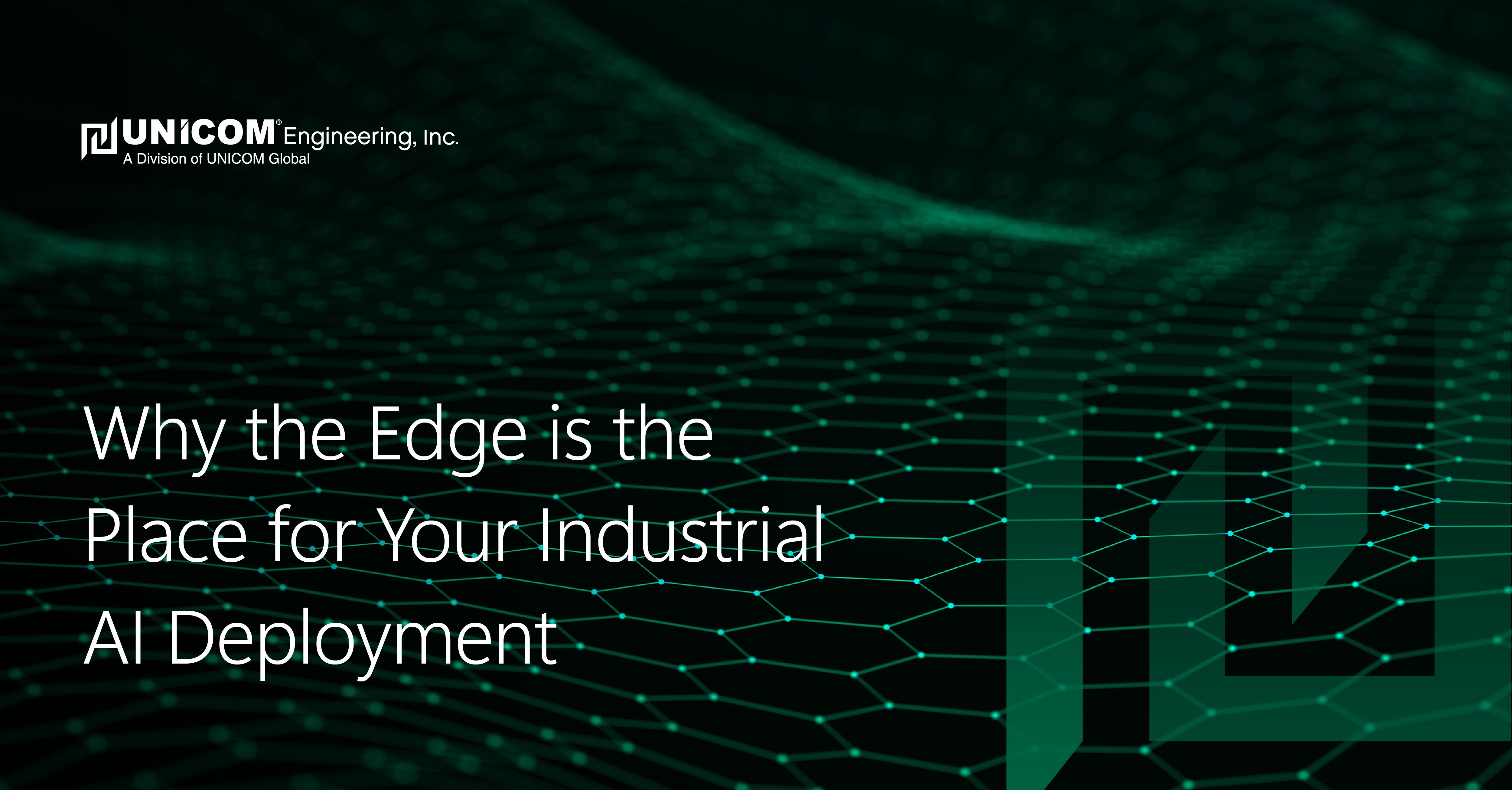Lately, it seems not a day goes by that we don't hear about Artificial Intelligence and what it's accomplishing or will soon accomplish. Yet, while much excitement surrounds the latest consumer use cases, not as much attention has been given to the possibilities of industrial AI, especially when deployed at the Edge.
Edge-Based AI
Not only is AI expanding into the consumer space, but it's also finding its way into the industry. It's no secret that as part of a trend known as Industry 4.0, manufacturing firms have been fine-tuning their production processes for years. Therefore, the systems they use must operate with high speed and precision - a requirement that can make cloud-based AI deployments impractical. In response, many companies are moving data-handling and processing power to their remote locations - collectively known as "The Edge."
Why More Industrial Firms are Using the Edge to Deploy AI
Just as many industrial firms operate in multiple locations, so too are they deploying their AIs. Some of their primary motivations include:
Data Protection
AI thrives on ample supplies of quality data, and thanks to sensors and other sophisticated tools, production lines produce more of it than ever. However, with the generation of more data comes risk. A leak could compromise valuable intellectual property and even personal identifying information leading to disastrous results.
Data Latency
Most manufacturers strive for higher and higher quality while improving speed and efficiency. To this end, an AI can help inspect parts and predict machine failures. However, as mentioned, manufacturing applications rely on split-second precision, so the time the system takes to exchange data with AI, known as latency, is crucial. For example, a machine that inspects welding can't slow down or stop an assembly line while waiting for input from the cloud. That's why locating the AI server at the Edge can make a difference by providing data at the necessary speed.
Bandwidth Conservation
Remote locations often operate with limited bandwidth. At the same time, AIs require large amounts of data. It's a recipe for bottlenecks and disappointing performance. For example, defect detection systems often employ cameras shooting thousands of frames per second, making cloud computing impractical. Locating servers on-site improves an AI's performance by reducing reliance on remote bandwidth.
Industrial AI Challenges
Despite its potential, integrating AI at the industrial Edge is not without its challenges, including:
Imbalanced Data
One challenge to manufacturing AI is finding the correct data. Most companies have already tuned their production processes to limit defects to happening only a tiny percentage of the time. Such a low prevalence makes it challenging to train the AI to spot the flaws correctly, and, as a result, the AI doesn't deliver as much value. One solution is to employ a data scientist to gather the dataset needed early.
Process Interdependency
Unlike simpler AI models that rely on one process or dataset, manufacturing AI must consider multiple sub-processes. For example, one part of a process may entail gluing while the other could involve welding, and while they seem to operate independently, one may affect the output of the other. Therefore, companies need to design their AIs to consider these relationships.
Creating AI 'Buy-In'
Often AI efforts can be met with skepticism from front-line workers, which can be understandable, considering it was once merely the stuff of science fiction. Still, the buy-in of employees across the enterprise is often needed to ensure success. That's why, when deploying AI, organizations must target their biggest, most-impactful problems. Then, when the system does show progress, employees notice and feel its positive effects as soon as possible.
Conquering Hardware
Even if an industrial firm understands its data and has buy-in from its employees, they risk hampering its AI's performance with poorly specified or configured hardware. For example, with its 4th Gen Intel Xeon Scalable processors, Intel offers multiple acceleration technologies, such as Intel AMX and Intel AVX-512, designed to maximize performance. And as for platforms, Dell Technologies offers its ever-evolving PowerEdge line of servers designed to operate in the demanding environments of remote locations.
Extend Your AI to the Edge With UNICOM Engineering
As an Intel Technology Provider and Dell Technologies Titanium OEM partner, UNICOM Engineering stands ready to design, build, and deploy the right hardware solution for your next AI, Deep Learning, or HPC initiative. Our deep technical expertise can drive your transitions to next-gen platforms and provide the flexibility and agility required to bring your solutions to market.
Leading technology providers trust UNICOM Engineering as their application deployment and systems integration partner. And our global footprint allows your solutions to be built and supported worldwide by a single company. Schedule a consultation today to learn how UNICOM Engineering can assist your business.
